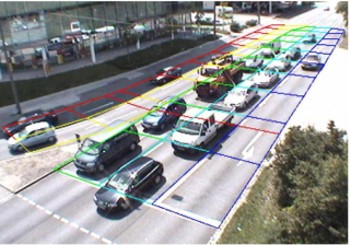Outset

In the Operative Regional Integrated and Optimized Corridor Control in Nuremberg (ORINOKO) project, which was funded by the German Federation within the scope of the »Traffic Management 2010« research program, the Fraunhofer IVI developed practicle and financeable solution approaches for the comprehensive, city-wide identification of traffic states and for the improvement of the traffic light control system. In order to reach this aim, methods of data fusion and prognosis, as well as novel macroscopic, grid-adaptive control processes were analyzed and implemented as examples. Special focus was put on the solution approaches' transferability to other cities. On the basis of video detection and taxi-based floating car data (FCD), two traffic recording systems were developed and optimized that proved to be more cost-efficient than induction loops and that can be operated comprehensively throughout the entire city area.
The new data foundation can be used for quality control in road traffic, traffic information services and a more dynamic choice of signaling program.
The »Dynamic Traffic Management System Exhibition Center/Stadium/ARENA (VLS)«, a system installed in southern Nuremberg and equipped with an extensive number of sensors and actuators, was used as a research platform for the project. Using this system, it was possible to test the project results and products with regard to their efficacy in commuter traffic and event-related traffic. Travel time data from Nuremberg's taxi fleet comprising up to 500 vehicles and traffic data of the public transport network provided by the VAG data center were also used.
